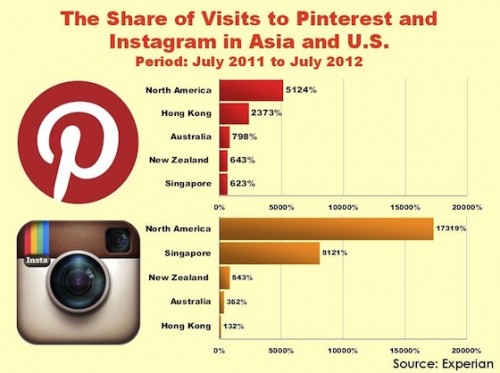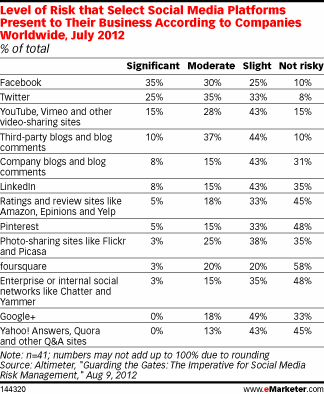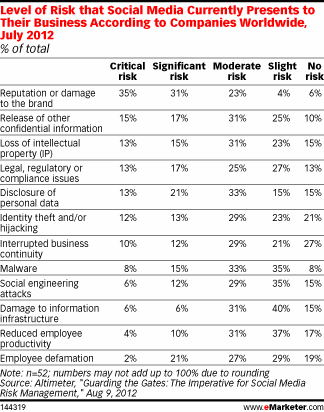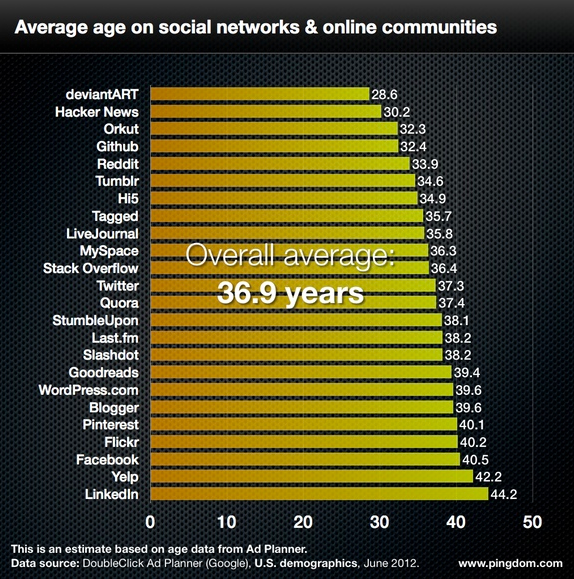Five Friday Facts #44

Picture-perfect social commerce
Asian consumers in Singapore and Hong Kong are flocking to niche social networks Pinterest and Instagram in droves but what’s really making retailers sit up and notice is the rate at which consumers’ are spending after visiting these sites. Researchers found that Singapore-based users visit both international and local social commerce sites whilst Hong Kong users visit global and Chinese e-commerce sites after surfing Pinterest and Instagram. It’s interesting to note that whilst Facebook drove 47% of traffic to Instagram in the US, 33% in Australia and 22% in Singapore, the largest source of Instagram traffic in Singapore came from Twitter at 42%.
More Asian consumers make purchases online weekly
A Nielson study of more than 28,000 ecommerce consumers in 56 countries uncovered that 62% of Asian consumers made online purchases on a weekly basis. This is higher than the global average of 52%. A quick glance at the chart below revealed an interesting statistic; it appears that 81% of Asian consumers provide feedback about a grocery category using social media on a weekly basis.
How will Facebook’s purchase affect Instagram in China?
With Facebook’s acquisition of Instagram on track for completion, there’s a risk that the latter will be blocked in mainland China. This will certainly bring Instagram’s growth of 100,000 downloads per week within China to a screeching halt. That would be a pity especially since the cross-posting functionality offered by Instagram puts it on the path to phenomenal growth in China, especially since it’s one of a handful of applications that supports posting to Sina Weibo (over 350 million registered users) in addition to Twitter and Facebook. Here are some numbers to ruminate over: Instagram has over 80 million registered users and saw more than 4 billion photos uploaded globally since its launch in October 2010. More than 50,000 Sina Weibo users signed up and 100,000 photos were shared to Weibo from Instagram since March 2012. Consider too the number of pictures uploaded to Instagram with China-related hashtags: 120,000 photos with the hashtag #Beijing, 125,000 with the hashtag #Shanghai, and 440,000 with the hashtag #China.
Social media risk management
Social media is a double-edged sword. When well-managed, it can be a powerful tool to propel your brand or product to international success and recognition as it allows brands to connect with consumers virtually seamlessly. Unfortunately the reverse is true in a crisis. Recent surveys reveal that social media is ranked as one of the top 5 risk factors to corporate performance. Here’s how social media measures up in a rundown of risks: 41% of US executives surveyed said global economic environment was a risk, 32% found government spending and budgets risky, 30% felt regulatory changes were a risk, and 27% said social media was a risk. It is significant to note that social media risk tops the list after broader economic and regulatory concerns. As for the top platforms in the rapidly expanding social media world with the largest potential to damage a brand, the top 3 were Facebook, which 35% of marketers considered presented a significant risk, 25% for Twitter, and 15% for YouTube and other video-sharing sites.
In a study of the types of risk social media posed to brands, 66% of respondents to Altimeter’s survey said reputational damage to the brand was a critical or significant risk. Release of confidential information was the next biggest concern with 32% of respondents citing it as a significant or critical risk.
Age in the time of social media
Death may be the great equalizer of men but the Internet and social media has likewise levelled information barriers for many users around the world. The sheer magnitude of the number of social media users are but one part of the story; demographics such as age, gender and income levels are significant factors for consideration in targeted marketing. Dispelling the notion that social media is the domain of the very young, studies have shown that the average age of a social media user in the US is just under 37. Here’s how the top social media platforms stack up in terms of users aged 35 and above: 55% of Twitter users are 35 and above, 63% on Pinterest, 65% on Facebook, and 79% on LinkedIn. Interestingly, the average age of Facebook users has increased in the past 2 years whilst the reverse is true for Twitter.




